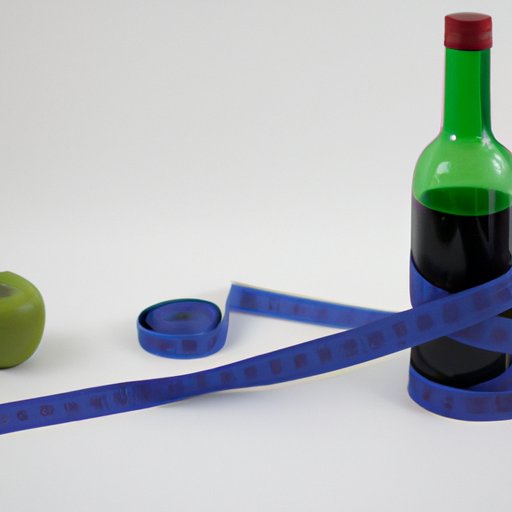Introduction
Wine is a beloved beverage around the world, enjoyed with meals or on its own. While many wine lovers are interested in the taste, quality, and region, few actually pay attention to its calorie content. It’s not uncommon to hear someone say, “I don’t know how many calories are in wine.” But in today’s health-conscious society, keeping track of calorie intake is important. So, how many calories are in wine? In this guide, we’ll explore everything you need to know about wine and its calorie content, from understanding how calories are measured to healthy alternatives for guilt-free sipping.
Everything you need to know about wine and its calorie content
Before diving into wine’s calorie count, it’s important to understand what calories are and how they’re measured. A calorie is a unit of energy used to measure the amount of energy provided by food and drink. In simple terms, calories are what fuels the body. When it comes to wine, the calorie count varies depending on the type of wine, the amount consumed and the alcohol content.
Wine is made from fermented grape juice, which contains natural sugar. During the fermentation process, yeast consumes the sugar, which turns into alcohol and carbon dioxide. The alcohol content, sugar content, and serving size all play a role in determining the calorie count of wine. On average, a 5-ounce serving of wine contains between 100-150 calories. However, fortified wines, such as port, can have up to 200-300 calories per 5-ounce serving due to their higher sugar and alcohol content.
Red versus white: Which wine has fewer calories?
When it comes to red versus white wine, many people wonder which one has fewer calories. The truth is that the calorie count for red and white wine is generally the same. The difference in color comes from the type of grape used and how the wine is made. However, some studies suggest that red wine may have additional health benefits because it contains more antioxidants than white wine.
The calorie count for wine can vary depending on the type and region. For example, sweet wines tend to have more calories than dry wines. In general, choosing a wine with lower alcohol content (usually 12% or less) can help reduce the overall calorie count.
Savoring the taste without overindulging – Tips for drinking wine in a healthy way
Drinking wine in moderation can be a healthy part of a balanced diet. Enjoying a glass of wine with dinner or for a special occasion can enhance the dining experience. However, it’s important to savor the taste without overindulging. Overconsumption of alcohol not only leads to consuming too many calories, but it can also have negative health effects.
One way to savor the taste without overdoing it is to use a wine glass with a smaller size. This not only sets the drinking pace but also gives you a more appropriate serving size. Another way to enjoy wine in a healthier way is to pair it with healthy foods like fruits, cheese, or a charcuterie board. Avoid pairing wine with fatty or processed foods that are high in calories.
Wine and weight loss – Can you still enjoy a glass while shedding pounds?
Many people may wonder if wine can be part of a weight-loss plan. The answer is: It depends on how it’s consumed. Wine can be a part of a healthy diet for weight loss when enjoyed in moderation. However, with 120-150 calories per serving, drinking too much can lead to overconsumption of calories.
For those looking to incorporate wine into their diets but also want to lose weight, it’s important to pay attention to portion sizes and calorie intake. Choosing a dry wine with low alcohol content can help keep the calorie count down. It’s also important to track calorie intake and not exceed recommended amounts.
Decoding the label – Understanding how alcohol content affects calorie count in wine
When it comes to understanding how alcohol content affects calorie count in wine, it’s essential to read the label. Alcohol content is measured in a percentage by volume (ABV) and is usually listed on the label. Higher alcohol content generally means high calorie count and a sweeter taste.
Choosing a wine with lower alcohol content can help reduce its calorie count. Wine labels can also provide serving sizes and calories per serving that can help consumers make informed decisions. As a general rule of thumb, most wine contains between 100-150 calories per 5-ounce serving.
Healthy alternatives to your favorite wine – Low-calorie options for guilt-free sipping
For those looking to reduce their wine intake without sacrificing the taste, there are many low-calorie wine alternatives to choose from. Wine spritzers are a popular option and easy to make at home. Simply mix wine with sparkling water, ice, and fresh fruit, and Voila. Another option is to choose wine with lower alcohol content, such as Moscato. Wine sorbet and frozen wine popsicles are also emerging trends as they contain fewer calories than traditional wine and provide a fun way to enjoy your favorite drinks.
Conclusion
In conclusion, wine can be a healthy part of a balanced diet when consumed in moderation and in appropriate serving sizes. Understanding how wine is made, its calorie count, and how to make healthy choices when selecting wine can help wine lovers enjoy their favorite drink without derailing their healthy habits. So, the next time you pour a glass of wine, remember that it’s more than just a tasty drink – it also provides important nutrients and energy for the body.
